One of the most mystical and mysterious times of the year is approaching. Different cultures give it various names: Halloween in the English-speaking world, El Día de los Muertos (Day of the Dead) in Latin America, and in my country, Italy, it’s known as Il Giorno dei Morti (Day of the Dead). It’s a time when magic, ancient traditions, and the honouring of ancestors intertwine.
The exact dates of these events differ slightly—Halloween is celebrated on the night between October 31 and November 1, while the Day of the Dead in Latin America and Italy falls between the night of November 1 and 2. Yet, their essence is remarkably similar; they originally marked the end of the harvest season and the beginning of winter—an essential time for ancient communities whose survival relied on mastering the cycle of sowing, harvesting, and staying attuned to nature. What makes this period so extraordinary is the shared belief that it is a time of transition and transformation—a mystical moment when the boundaries between the worlds of the living and the dead blur. It truly is the spookiest, most magical time of the year!
The Celts celebrated it as Samhain. They believed that divination was more powerful and that communicating with the spirit world was easier. It was indeed a night of deep magic! People would wear costumes to disguise themselves from spirits or to impersonate them, a practice that may have inspired the modern-day Halloween costumes we know today.
However, there's an aspect that intrigues me most—one deeply reflected in El Día de los Muertos and its Italian equivalent, and one that was also pivotal during Samhain. This dimension, almost lost in Halloween today, is overshadowed by its more commercial aspects: the honouring of ancestors. During El Día de los Muertos, families visit cemeteries to clean and decorate the graves of their loved ones and create elaborate altars, or ofrendas, in their homes to welcome the spirits of the departed. These altars are adorned with photographs of the deceased, their favourite foods and drinks, candles, flowers, and other personal items. Offering food is a vital aspect of the ritual, as it’s believed to provide nourishment for the souls during their visit—something similar to what my family used to do...
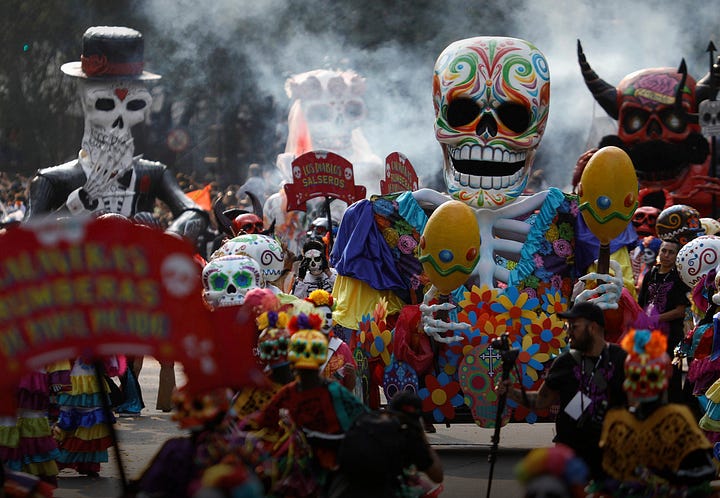
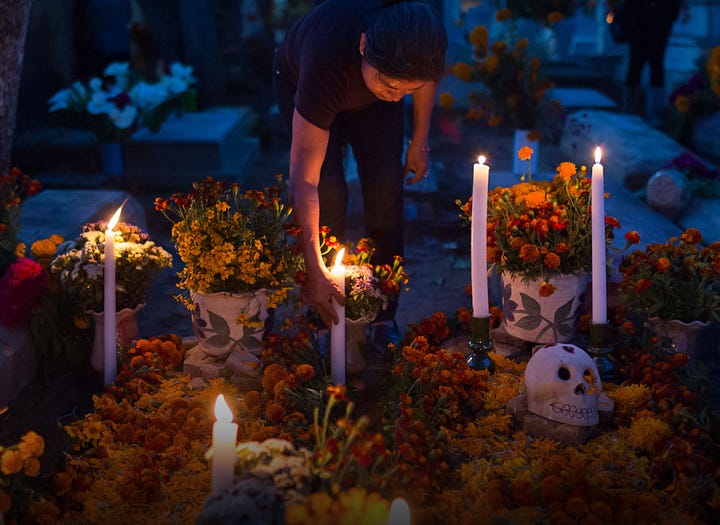
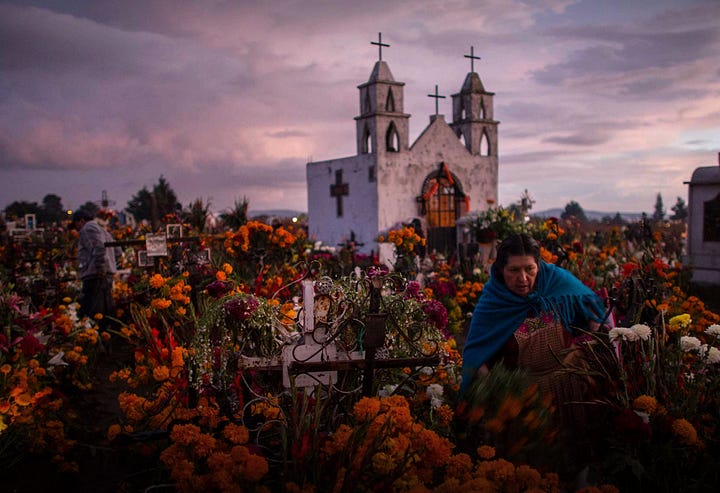
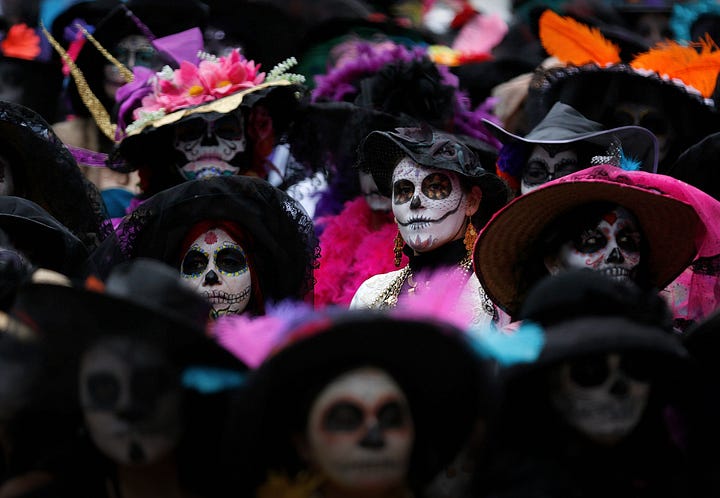
I’ve written many times about my childhood, filled with magic, ghosts, séances, and tarot cards whispering their stories, alongside the strange and mysterious happenings in my home. Yet, I've never delved deeply into the rituals we practiced on the Day of the Dead. This night was the pinnacle of magic—an occasion I awaited with both excitement and trepidation, for it held a different, darker, and more mysterious kind of magic than what my mother typically performed. I was both drawn to it and unsettled by its profound mystery.
But, dear reader, there's something essential to share before blowing out the candle and stepping into the deepest darkness of the Night of the Dead. My mother lost her mother while she was expecting my brother. Just as he was about to enter the world, my grandmother departed from it. This was a deeply dramatic time for my mother, who had an extraordinary bond with her mother—connected by affection, love, and ways that go beyond any rational definition. We could say their connection was unique. Both of them had a sensitivity to see the “unseen world”.
I have no real memory of my grandmother, who passed away when I was three. I recall only a single, clear, fleeting moment with her at her home. She loved me deeply, and I regret not being able to know her better. My mother often said my grandmother was a witch, like herself, and always warned us, “Never dare to cross her—or else!”. My mother kept her memory alive with stories of her life, her quirks, and the odd little sayings she was known for. Her life hadn’t been easy; she had endured much, partly due to the times—she had witnessed the horrors of WWII and the tragedies that fascism brought to our country—and partly due to personal hardships.
My mother often showed us photos of her, so we were quite familiar with her image; in a way, she seemed alive. And indeed, she would slip into my dreams gently, always delivering messages for my mother. These messages were cryptic to me, it was as though they were speaking in a secret code. My mother would ask questions during her rituals, and my grandmother would give the answers to me; answers whose significance I couldn’t grasp to questions I never knew. Yet my mother was consistently impressed and, frankly, shocked by how accurate these messages were. We spoke about it often, but neither of us could fully understand why I was the link between them. A mystery of our family...
I always told her that she was wrong; there weren't two witches in our family, but three, with me being the third! Not only did I have the strange ability to talk to a deceased grandmother in my dreams, but I also shared a similar connection with my mother as she had with my grandmother. Quite a peculiar family we were!
The night between November 1 and 2 was when my mother’s magic was at its peak! The veil separating us from the spirit world was torn apart, allowing her to communicate with my grandma without my intervention. Everything began soon after dinner when she disappeared deep into the pantry and emerged a few minutes later with an old, darkened metal pan, its bottom dotted with holes like a colander. The pan was rusty and bent from years of use, and it had one purpose only: to roast chestnuts!
She would carefully score the skin of each chestnut before tossing them into the pan. Once it was full, she placed it over the flickering fire in the kitchen to roast. This pan was special; it had once belonged to my grandma and was essential to the ritual. The gas hob provided the only light in the kitchen, and there was a reason for this: to better see the “little nuns” flying high, screaming and dancing in the air before vanishing just shy of the ceiling.
As the chestnuts roasted, she would shake the pan vigorously now and then, and the chestnuts released the “little nuns”—particles of their skin that caught fire and soared upward. Sparks, cinders, and tiny flames cast fleeting lights in the darkness of the kitchen. I was enchanted, mesmerized by the little nuns and their incandescent flares. When the chestnuts were ready, she wrapped them in a damp, old cloth to rest.
Before going to bed, we all had some chestnuts... they were delicious! Then we helped her prepare everything: we placed some of the best chestnuts—the biggest and most roasted—on a plate at the centre of the kitchen table. Nearby, my mother set a glass of milk. Everything was ready for Grandma's visit! From that moment on, the kitchen became a forbidden land! No one could enter its boundaries for any reason! The walls of the kitchen would not be walls anymore at the deepest point of the night. They transformed into mist... a thick mist that the dead could cross. But this would only happen if everyone was sound asleep, in the magical silence of the night.
I was scared and thrilled at the same time. The idea that my grandma’s ghost—because we knew she would come as a ghost—would visit us was intense! I wanted to see her, but at the same time, I was afraid. My mother, who knew me better than I knew myself, used to tell me that the most powerful magic is invisible. There are things that are not meant to be seen, and Grandma’s ghost was one of them. The dead do not like to be disturbed, seen, or interrupted during whatever they are doing or supposed to do when they cross over into the land of the living for a brief moment on that special night.
Sometimes I asked my mother if she was really sure that Grandma would come, but she never had any doubts. The proof was evident to everyone in the morning: little pieces of chestnut were all that remained on the dish, and the glass of milk sat empty, slightly moved from the centre of the table.
I always wondered how she would be as a ghost. Translucent? Floating in mid-air? Would her face be sharp and recognizable or blurry? Would she be “solid”, somehow material, or ethereal? Could she see us? Could she talk to us if we asked her a question? I never knew. I never saw her. But I was sure of her presence. The fabric of that night was different; you could feel the electricity in the air, the tension, the trepidation of waiting.
I always respected my mother's rules: the dead do not like to be seen, and thus, I almost never tried to see her. Almost—because one night, I left the door of my room ajar and spied into the darkness of the corridor, looking at the kitchen door. But I was the one who got caught! My mom surprised me and immediately sent me to bed, a smile on her face but a stern look in her eyes. “If you try to see her, she will never come!”
Those nights were full of mystery, and they never brought “normal” dreams but rather visions filled with fear, love, excitement, and unresolved mysteries. There wasn't a year without the ritual. Even as we grew older—kids, teenagers, young adults—my mother continued the ritual. She kept it alive even when she lived alone in her new house after separating from my father, and I am glad she did, for herself. It was important. It was a tradition that provided strength, respecting and honouring the memory of those we loved.
Today, I have so many questions I would love to ask her about our magical nights, but it is no longer possible. Now I perform the ritual for her. It never occurred to me that one day I would be the one to keep the tradition alive, waiting for her ghost. The history of my family is a repeating cycle. My mother passed away soon after my brother's second child, a daughter, came into this world. She left us too soon. I always imagined her as an old witch tending to her garden—very old, smiling under a large-brimmed straw hat—an image that, alas, never became a reality.
But today, there is something in the air. Soon that special night will come once more, bringing all its magic and mystery! I bought the chestnuts and will prepare them (alas, the old pan, like every respectable “magic relic” from a fantasy saga, is lost) and leave them at the centre of the kitchen table with a glass of milk, just as I do every year. I will perform the ritual here, in this little village near Durham, where I live in the wild North of England, where people venture out looking for fairies, while, my brother will perform the ritual at his house in Italy for his two kids, explaining to them how Grandma's ghost will come to visit during the darkest and most mystical hours of the night while they are peacefully sleeping. The tradition has been kept alive.
And in the morning, a little disappointed, I will find everything as I left it. With a strange mix of emotions in my heart, I will eat the chestnuts and toss away the milk, just as my mother did for us and as my brother will do for his kids. Then, as always, we will call each other to talk about the magic of this unusual night. “Did she come? Did you see her?” My brother will ask the usual questions: “Did she leave any message for us in your dreams?” And, as always, I will have one of my “strange” dreams to report, while my brother will describe how he caught a glimpse of her out of the corner of his eye as she passed in front of the kids' room. It has always been like that. It always will be. Each of us has our own way of seeing the unseen.
The closer the Night of the Dead approaches, the more “vulnerable” I feel. The more I explore my deck of tarot cards in search of answers. The more I pay attention to my dreams... It is an intense experience, coloured by loss, melancholy, and joy—the joy of memory, the joy of keeping the ritual alive, the joy of preserving and transmitting magic. Because too much rationality can dry out your heart! I love rationality; logic, philosophy, and science were my daily “bread” at university. However, I would never use science to explore the occult or explain the unseen. It’s like entering a china shop while riding an elephant—all the beautiful and delicate art would be in smithereens.
There are things that are better left unexplained. If you leave a single little island uncharted, untouched by every explorer, you can fantasize and imagine the marvel it might contain: the exotic animals, the birds with their multicoloured plumage, the menacing roars shattering the forest at night... and then, the lost city, with its palaces and temples echoing with footsteps lost in time. If you leave that little island unexplored, you can return to it again and again with your imagination, colouring it with your fantasy and creating a mythical place. Imagination is what keeps us alive; it is the shape of our soul.
I would have never guessed, as a child immersed in the magical world my mother created for us, teaching us how to dream, how to be happy, and how to marvel at the mysteries of life, that one day creating a magical world, with the same aim, would become my job, my joy, and my purpose in life. The magic she created for me, I now create for my nephews, my readers, and for those who play with my tarot, games, or experience my artistic fantasy multiverse. Keeping that little island unexplored and teaching people how to see the unseen, how to fill the island with their own fantasies is my little mission.
But this is not the whole story. My mother was creating that world of wonders to shelter us from the brutality of things I've never written about. There is no witch without her nemesis, the Holy Inquisitor who wants to burn everything he cannot understand... my father. But I do not want to dwell on what we had to endure. He is gone, and he cannot hurt us anymore... almost. The wounds are still bleeding.
In protecting us, my mother was saving herself too, just as I am saving myself with my fantasy. One day I will write about everything I endured, and when I cannot write, I will illustrate it. But not today. Today, I write for me, for you, and for my kids who will read these lines.
Now, my dear dead, alive, in-between, and undecided, I wish you all a most macabre and intense Halloween-Día de los Muertos. Dream, do something magical, reconnect with those you loved, nurture your inner child, smile, and dance under this most magical night. Celebrate your life! And remember what my mother used to say: while they are crossing into the land of the living, do not disturb the ghosts; they like to be left alone...
Andrea
Post Scriptum
An ancient Greek myth for Halloween
What has always fascinated me is the connection between the cycles of the seasons, the life-death cycle, and this mystical liminal space between life and death. The ancient Greeks were masters of representing complex ideas through myth. The story of Persephone (Proserpina in Roman mythology) and Hades captures this delicate moment of transition and transformation. Originating in Greek mythology, it was later adapted into Roman lore.
At the heart of this tale is Persephone, the radiant goddess of spring and cherished daughter of Ceres, the goddess of agriculture and harvest. Ceres doted on her daughter, keeping her safe and sheltered. One fateful day, while Persephone was gathering flowers in a field, Hades, the god of the underworld, emerged from the earth, captivated by her beauty. Without hesitation, he seized her and brought her to his subterranean realm.
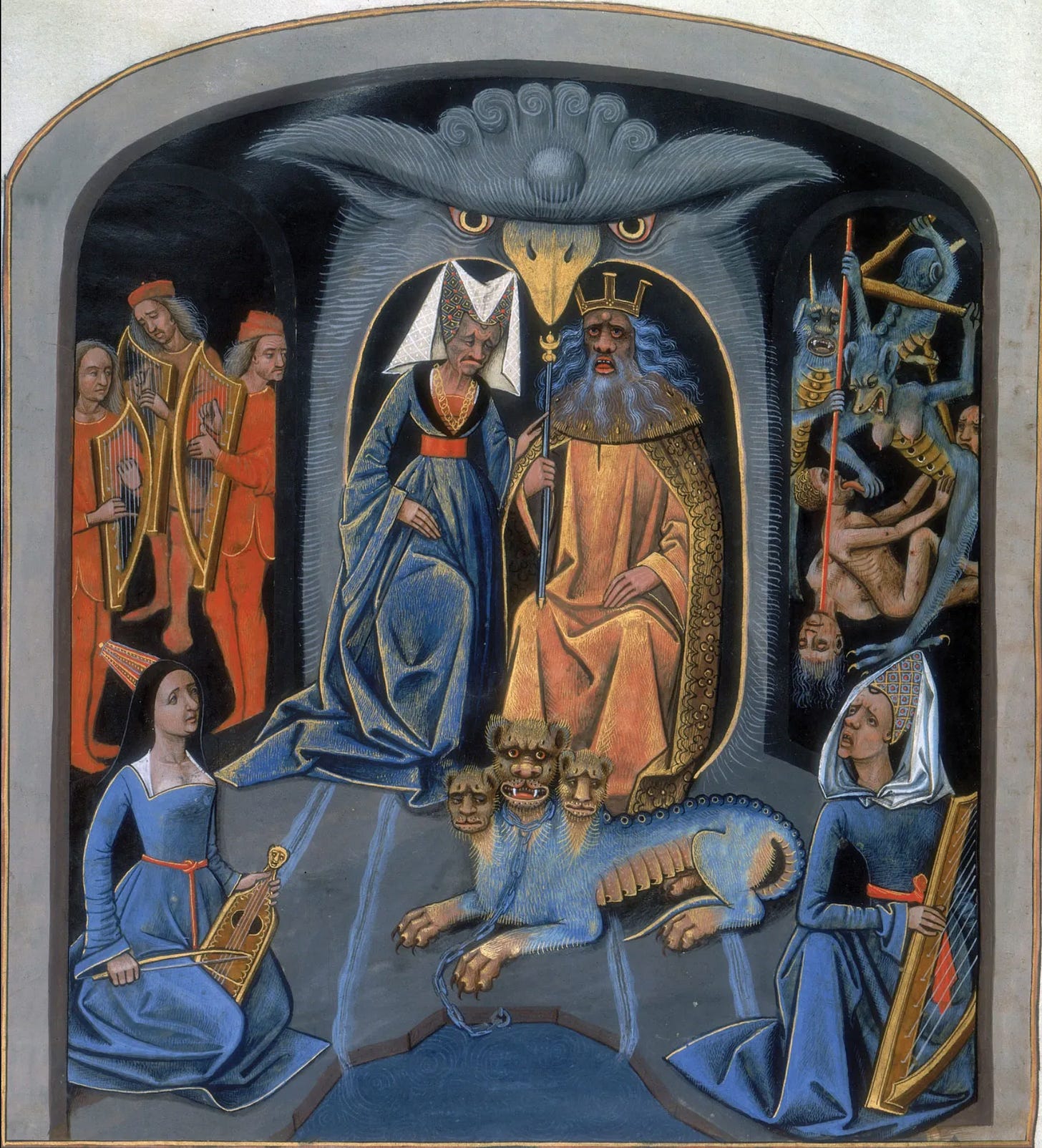
The abduction was shocking and brutal. Persephone cried for help, but neither mortals nor gods heard her, except for Hecate, the goddess of magic, and Helios, the sun god, who witnessed the event. Ceres searched tirelessly for her daughter, neglecting her duties to the Earth. As she wandered in grief, plants withered, crops failed, and a bitter winter spread across the land, depriving humanity of sustenance.
When Ceres learned from Helios what had happened, her sorrow turned to rage, and she demanded Persephone’s return. She pleaded with Zeus to intervene, and he agreed, sending a messenger to Hades to request her release. However, the laws of the Underworld were strict: anyone who consumed food there would be bound to it forever. In her grief and confusion, Persephone had eaten six pomegranate seeds offered by Hades —a fateful act that bound her to the Underworld.
Zeus, recognizing Ceres' despair and the suffering on Earth, struck a compromise. Persephone would spend six months with her mother, bringing warmth, fertility, and growth to the land. These months would mark spring and summer, as Ceres rejoiced in her daughter’s presence. The other six months, Persephone would return to the Underworld as Hades’ queen, and Ceres, in her sorrow, would let the Earth die back, bringing autumn and winter.
Yet the story holds a twist. Though her abduction was forced, Persephone ultimately embraced her role as Queen of the Underworld. She came to be associated with death, mysteries, and the afterlife, presiding over the dead with compassion and wisdom. In her dual role as goddess of spring and queen of the dead, she became a powerful symbol of rebirth, reflecting the cyclical nature of life, death, and regeneration.
The myth of Persephone and Hades has served as a profound source of symbolism for centuries. It represents the balance between life and death, light and darkness, and has been interpreted as a story of growth, maturity, and the acceptance of both life’s beauty and its inevitable darkness. This myth captures humanity’s enduring fascination with the mysteries of death, the hope of renewal, and the eternal return of spring, tying the forces of nature to the divine order of the gods. In art and literature, Persephone and Hades’ tale has been portrayed as a romance, a tragedy, and a profound exploration of fate. Her story reflects not only the changing seasons but also the human journey from innocence to wisdom, as she transitions from maiden to queen, ruling both the world of the living and that of the dead.
Again, have a macabre week
Andrea




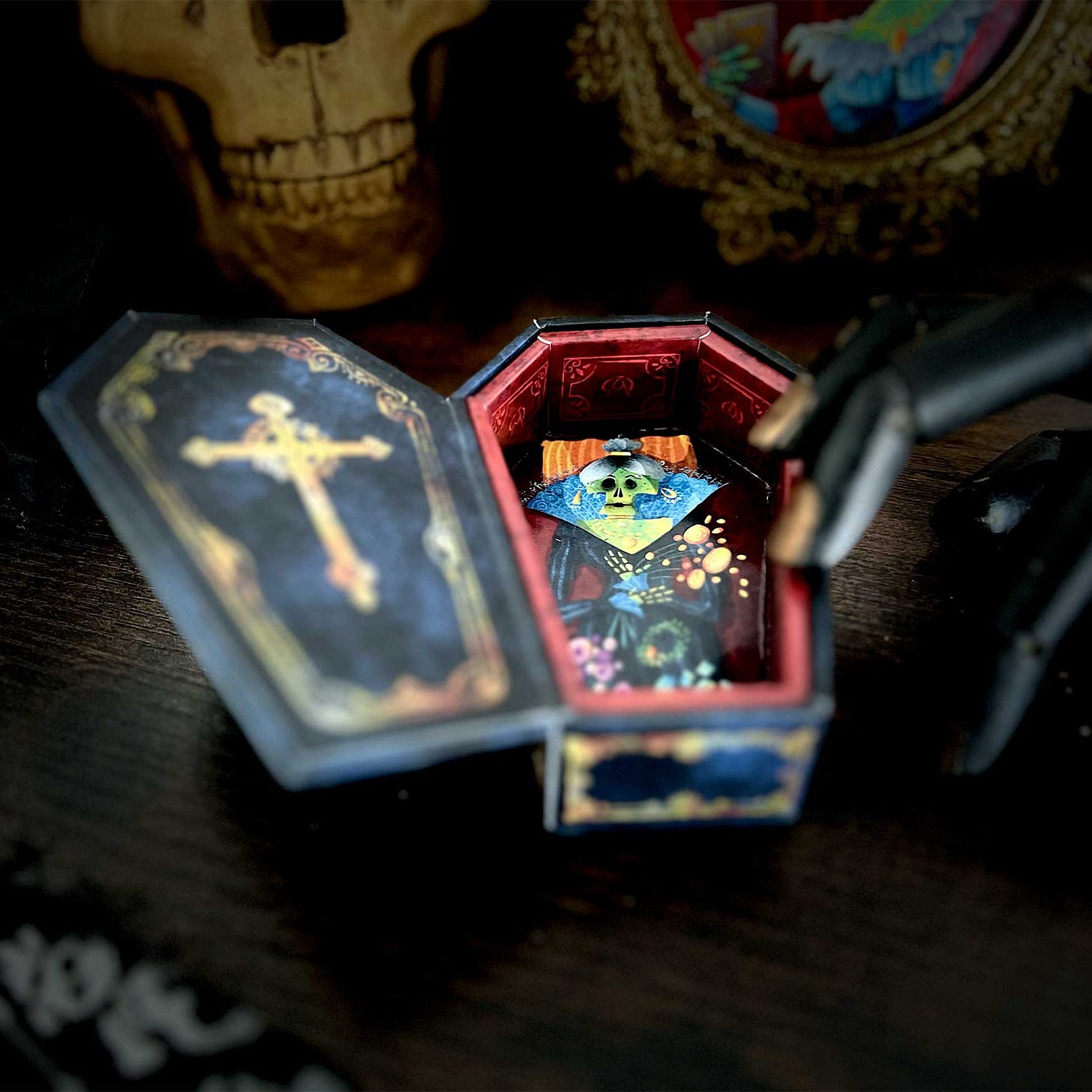
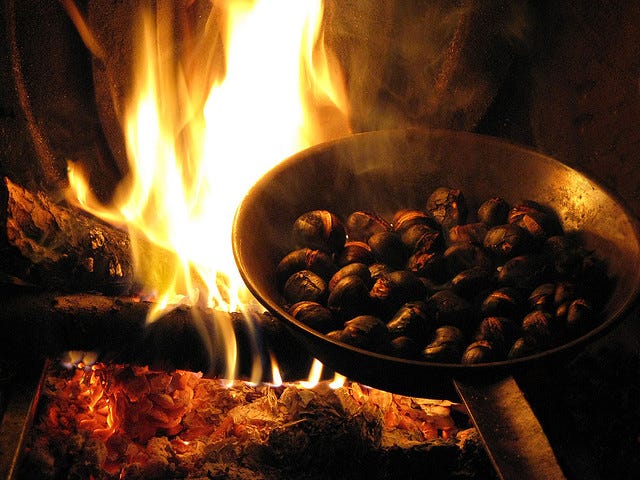
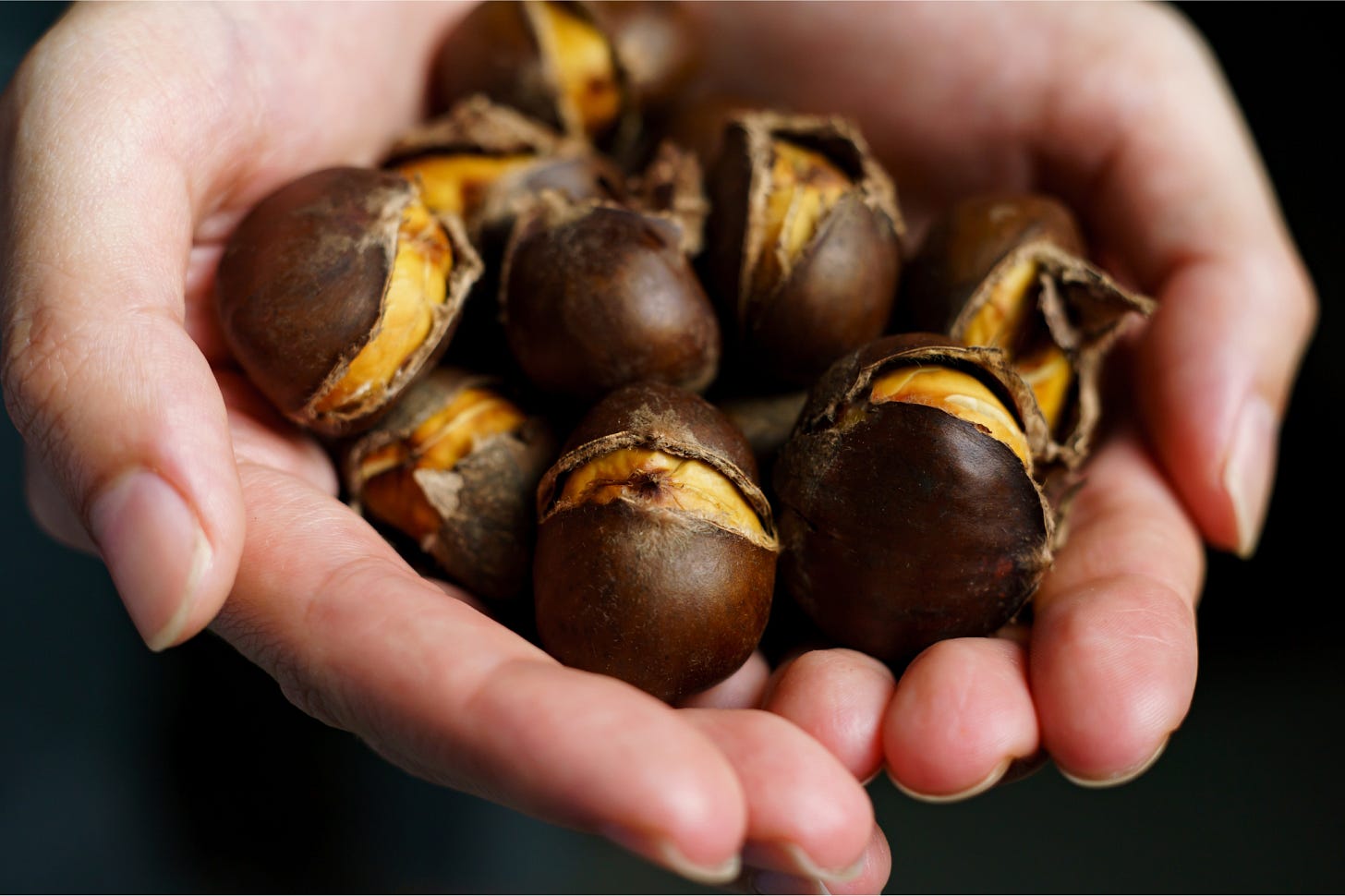
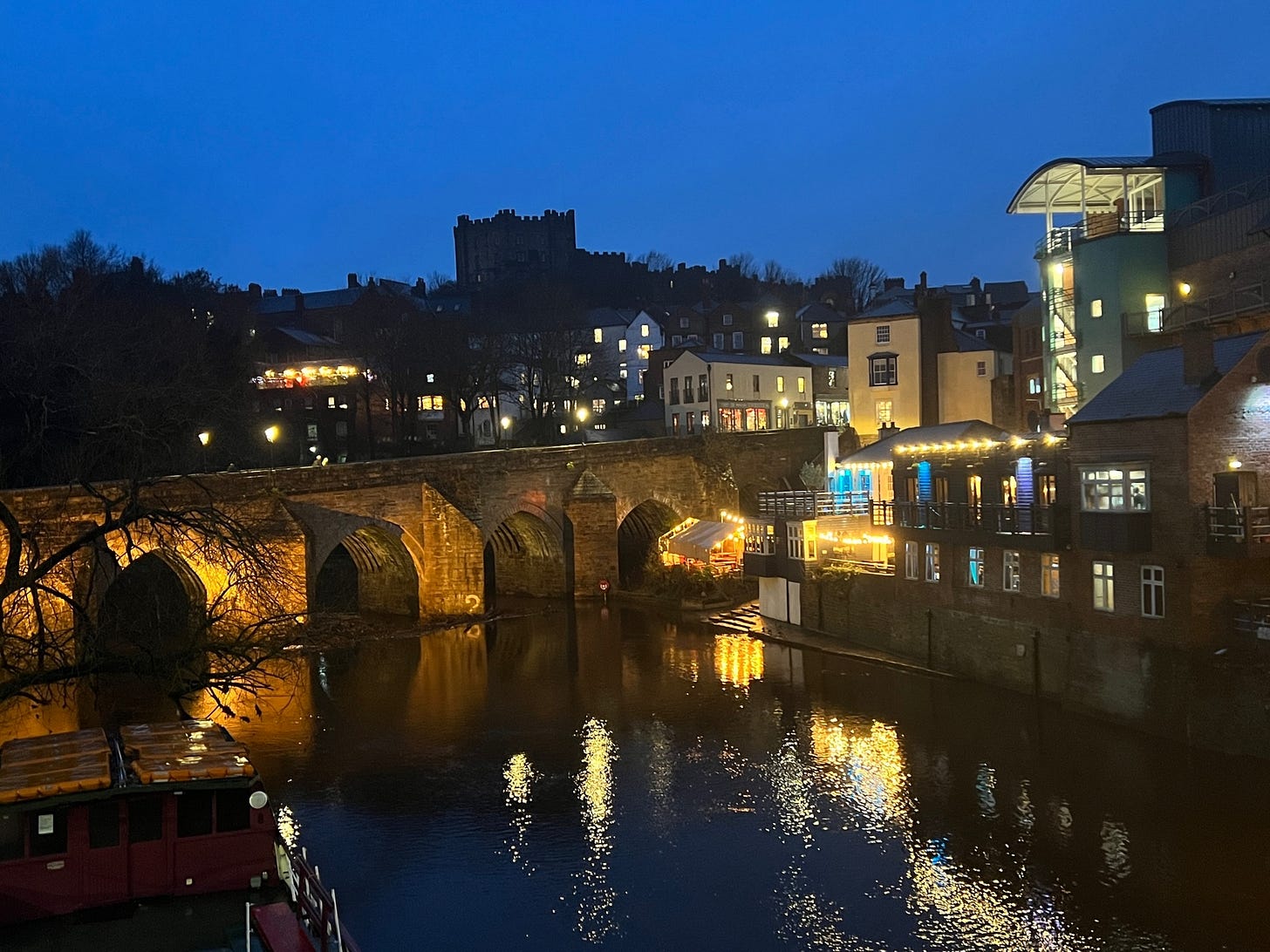
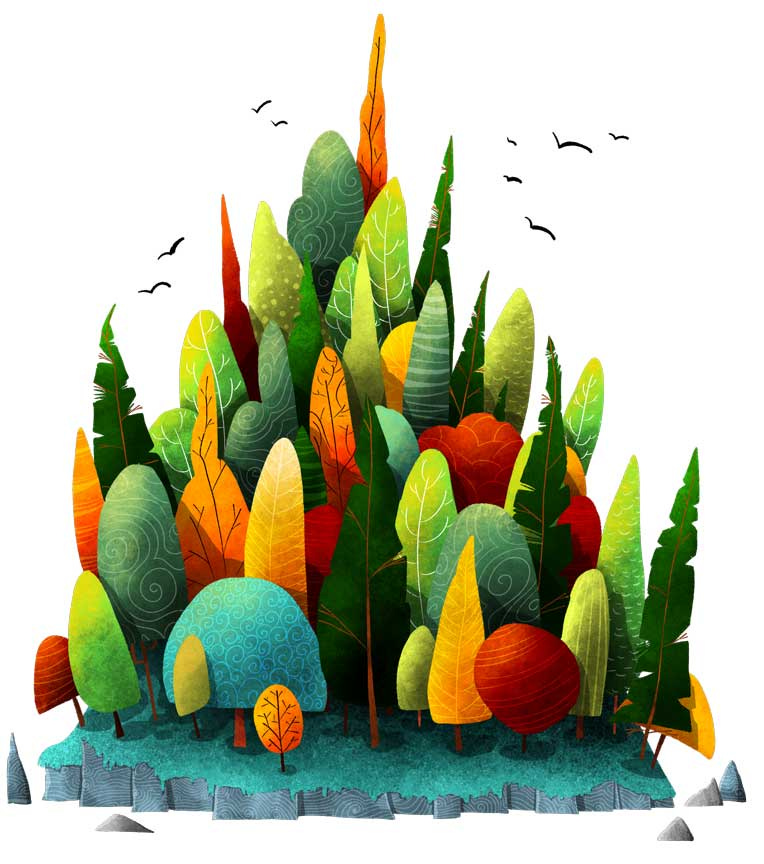
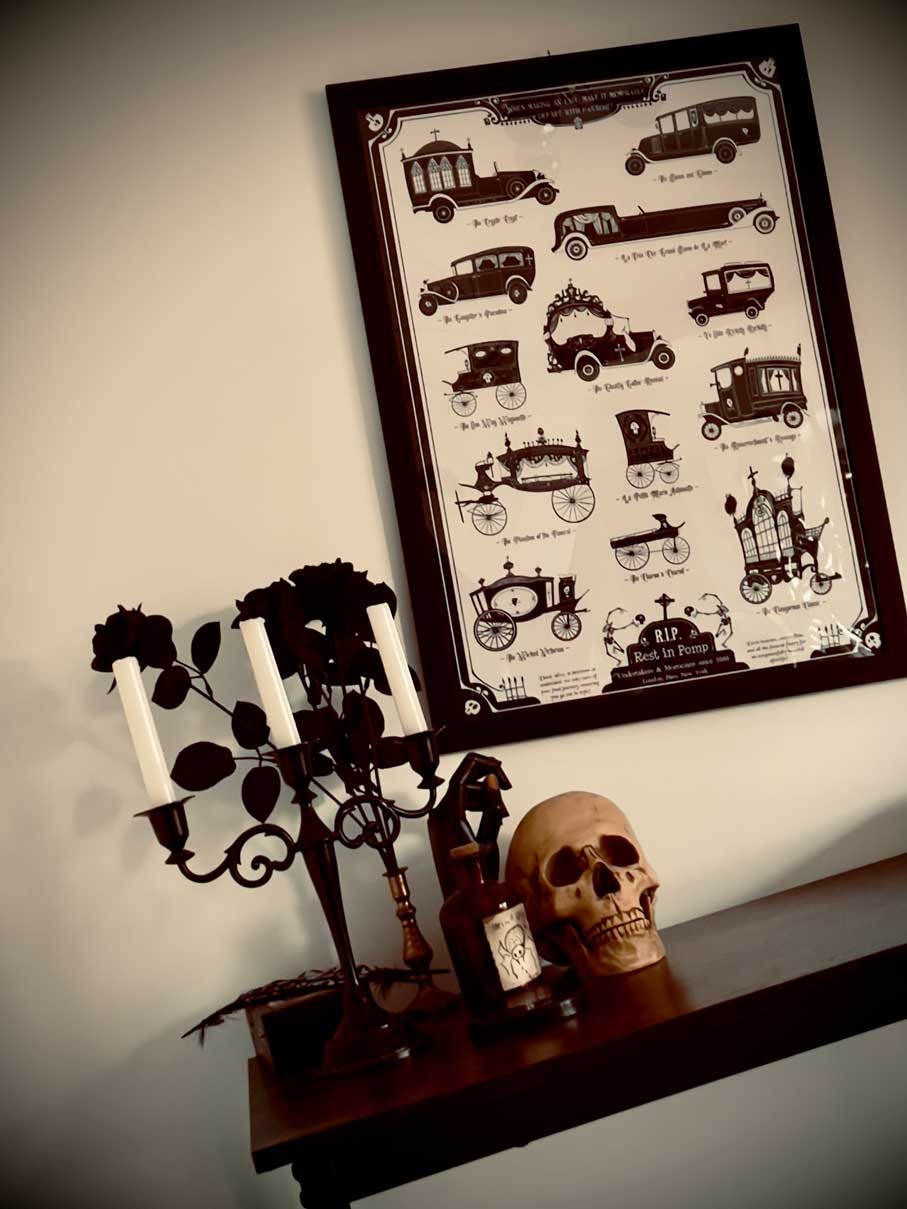
Thank you for being such a fabulous Wisdom Keeper, Andrea! And for sharing what is meant to be shared with us.